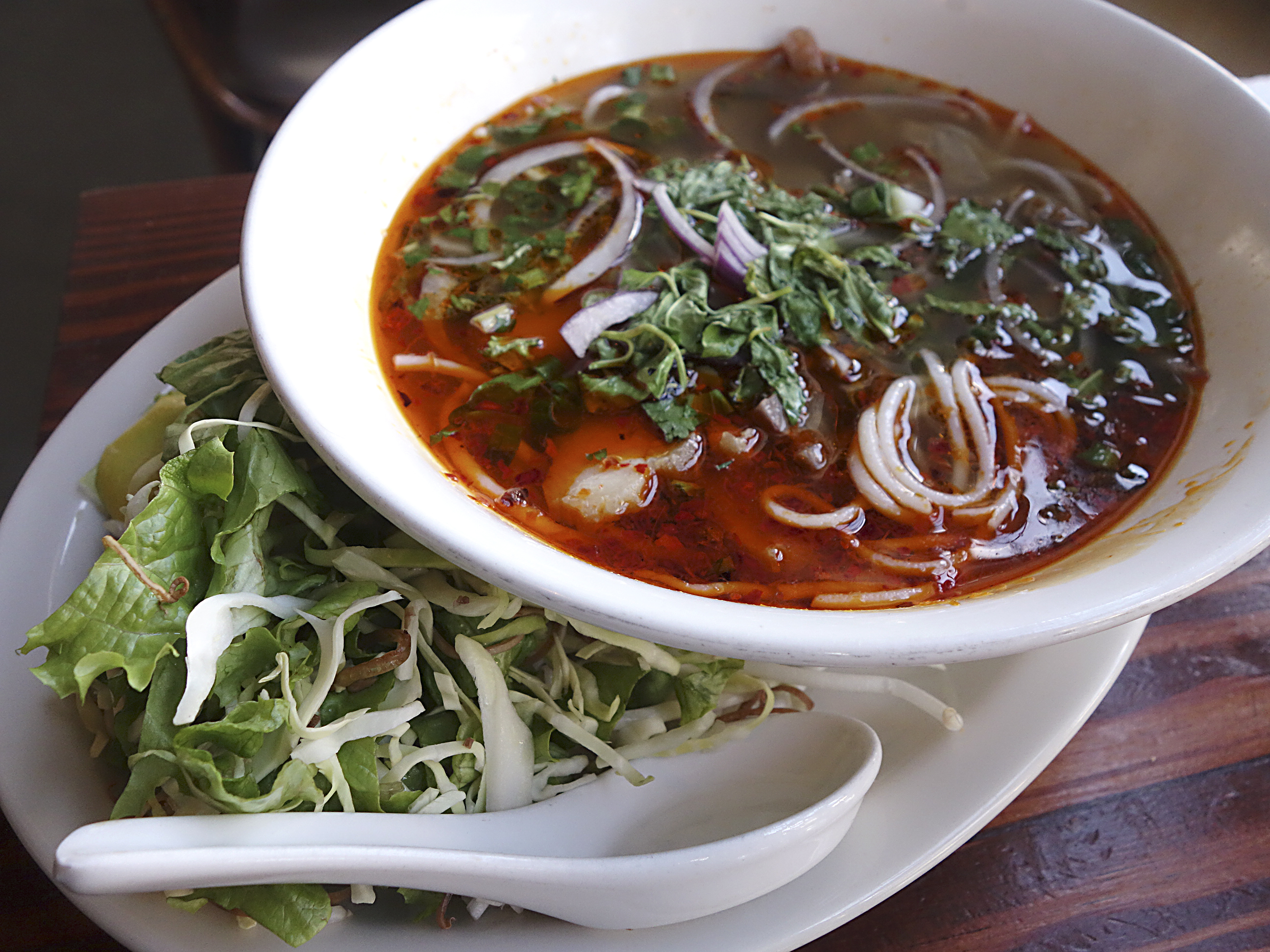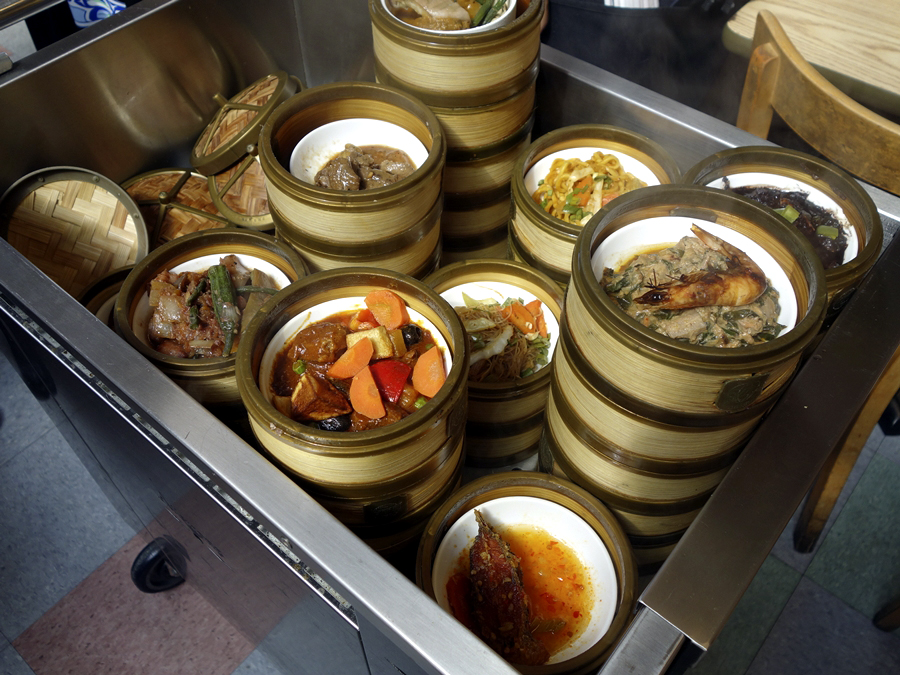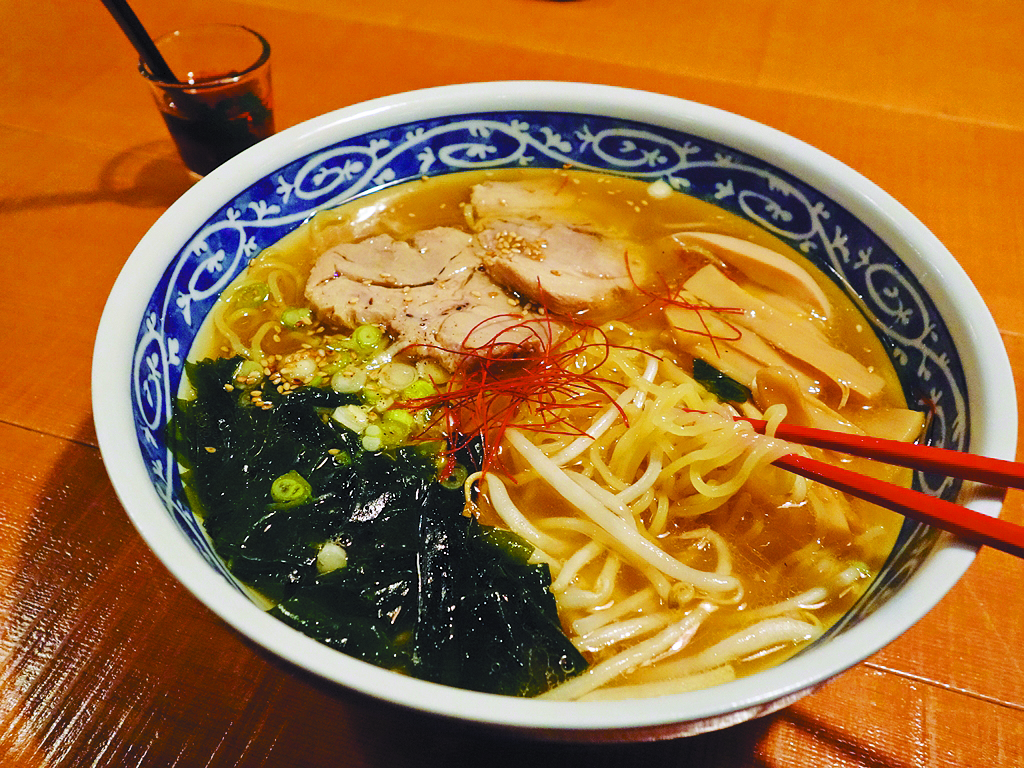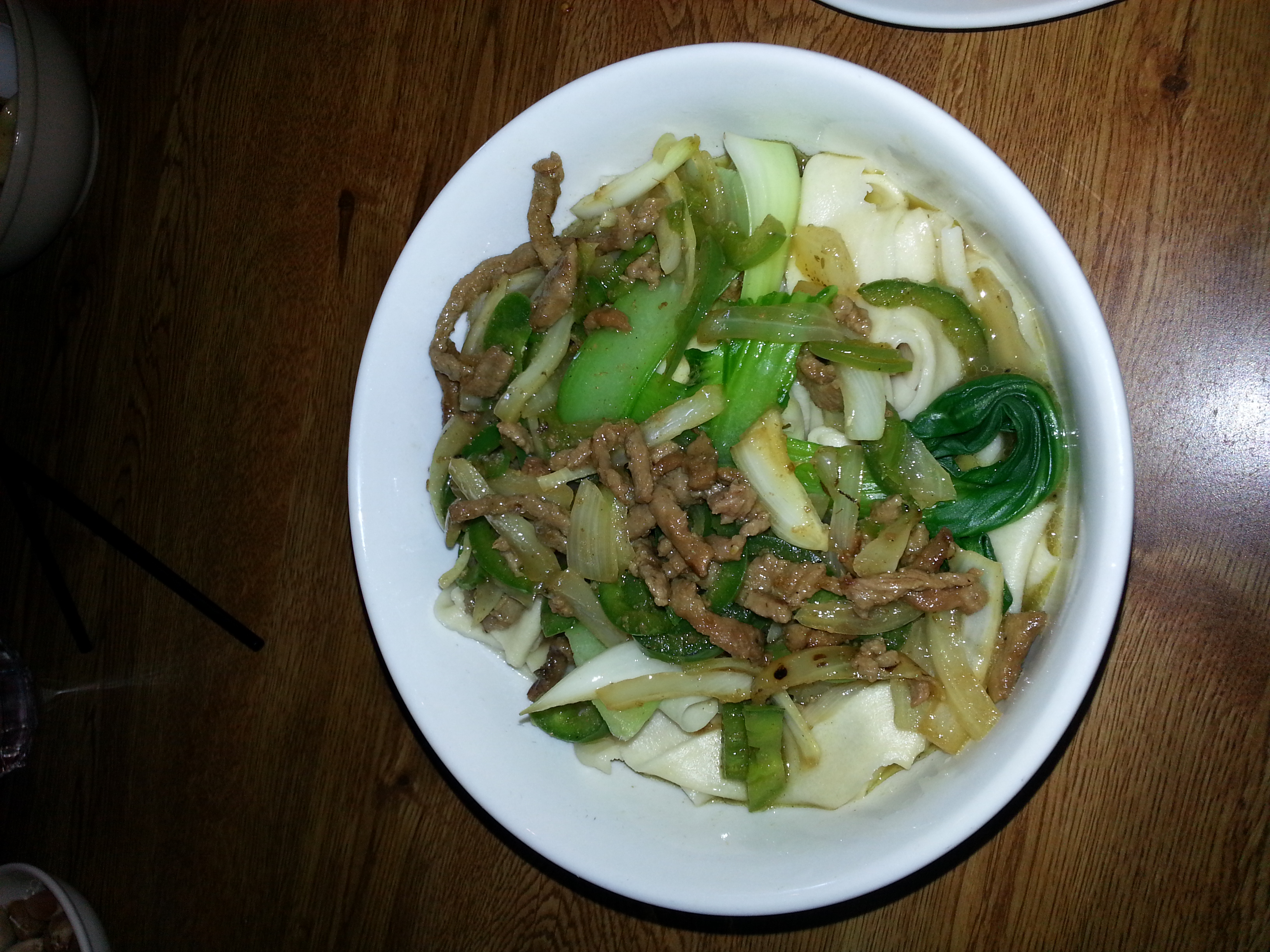Aside from a perfect partner, is it strange that the first thing I like to see in the morning is a bowl of soup noodles? It’s what the Vietnamese enjoy for breakfast, typically in the form of pho. And while pho may be the most ubiquitous Vietnamese noodle soup in Seattle, I’ve grown open-minded enough to want to wake up with another: bun bo hue, which chef/owner Eric Banh just added to Ba Bar’s breakfast menu, as he wants the world to discover what he believes to be the most flavorful Vietnamese soup.
“When I was growing up, I was terrified by it because it’s so spicy, but now I’m addicted to the flavor,” he explains, adding, “Whenever people talk about it, I salivate.” The same is true for me. I salivate at the thought of all kinds of soup noodles. As at the thought of a lover, my heart races for bun bo hue.
Starting with the stock, pho simmers beef bones low and slow, while bun bo hue brings heat to both beef and pork bones. (Those meats will appear in the final bowls of each.) While pho has a delicately soothing clear broth that can ease me into the morning, bun bo hue’s deep, hearty broth hits me over the head and gets me right into the game. It’s full of flavor, with fermented shrimp paste and loads of lemongrass. Further, brick-red annatto seeds impart a passionate glow to the broth.
Indeed, bun bo hue is the spicier bowl, sometimes to the point of inducing a sweaty affair. Interestingly, while pho’s herbs (Thai basil and cilantro or culantro) enhance the broth’s delicate flavor, bun bo hue’s herbs (typically mint, rau ram, and perilla) are dynamic but temper the strong broth. Both come with bean sprouts, onion, jalapeno, and lime, but bun bo hue is more exotic, with banana blossoms (and sometimes purple cabbage). It’s also more herbaceous and complex, with a terrific balance of sweetness, sourness, salt, and spice.
Even the noodles are different: Pho has flat rice noodles, while bun bo hue has softer and more sensual round rice noodles.
Much like his pho, Banh’s version of bun bo hue is a refined one—really clean-tasting but with an immediate hit of that funky fermented shrimp paste and tingles of lemongrass. Meats, as you’d expect, are high quality, with slices of both beef shank and alluringly fatty pork shank in the soup. (Ba Bar serves the pork off the bone to make the eating experience more user-friendly.) I find myself wishing for more noodles to enjoy with the delicious broth.
Banh has high praise for the bun bo hue at Hoang Lan, which is where I first discovered the soup years ago, before the nearby Othello Station train stop was even envisioned. How popular is Hoang Lan’s bun bo hue? The soup name is arguably more prominent than the restaurant name on the storefront sign!
According to Banh, Hoang Lan’s focus on bun bo hue (they serve about 20 times more bowls per day than Ba Bar) enables the restaurant to build up the broth, developing the desired lemongrass flavor and showing that, as in a good relationship, time is the key to richness.
Hoang Lan’s bun bo hue is a carnivore’s delight. In it you’ll find cha lue (pork sausage loaf), pork blood cakes, beef tendon, and a huge ham hock. Gelatinous and fatty, that hock is unwieldy to eat, but with the other meats it makes Hoang Lan’s bun bo hue a wilder, more primal experience.
If pho is like a long-term relationship, comfortable and convenient, then bun bo hue is for those still seeking the wild side, wanting spark to combat the stale.
food@seattleweekly.com








